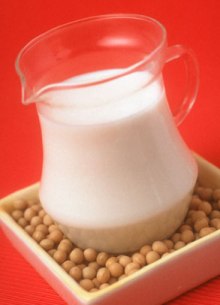If you are feeling hot in asummerday and does not have an air conditioner for instance, that’s doesn’t matter. Now you can keep yourself cool in a hot day even without an air conditioner by following just this simple process.

STEPS
1.Wet your wrists and other pulse points with cold water. Use a piece of ice wrapped in a face cloth, to continue after the coolness wears off. Constantly cooling off the wrists will also cool off the body. Never use just ice; make sure it is wrapped in a towel or something similar. Studies show that this will reduce your core body temperature by as much as 3 °F (1.5 ºC). The relief is almost immediate, and will last for up to one hour!
2.Use perspiration to cool the body down. Water vapor produced by sweating (avoid sweating too much) actually takes heat away from your body if it is exposed to air and allowed to evaporate. The best thing to do is to put your sweaty self in the path of a cool breeze or fan.
3.Wear a short sleeved shirt and put water on the sleeves. If there is a breeze or fan blowing on you, you can actually get cold. Use a squirt bottle, the sink or hose if outside to keep your sleeves wet. If you are outside and wearing long pants and you put water on your legs, the water will cool your legs.

4.Drink water,even if you are not thirsty!Youmustreplace fluids lost in perspiration to preventdehydration. Oral re-hydration may be accomplished by drinking an electrolyte-balanced beverage. The electrolytes help to make sure you don’t lose vital minerals through sweating. Adding ice will also help cool you off. Avoid lemonade, iced tea, and other sugary drinks (see the Tips below). Ice does not actually help you cool off if it is in water you will drink. Cool water does, but the colder the water the more energy your body spends making it body temperature so that it can use it.

5.Avoid direct sunlight. Stay in a shaded area if possible. Exposure to direct sunlight increases the heat index, so that your body may experience temperatures even higher than the air temperature! If you must go outdoors, go in the morning or evening. Wear clothes that cover up your body. A wide-brimmed hat is good. Light-weight, loose-fitting cotton clothing should be worn. It is better to wear a shirt with long sleeves and a collar to prevent any exposure. Some people (for example, Bedouins - In arid, low humidity climates) believe it is even best to wear 2 or more layers of clothes.
6.Go downstairs. Warm air is less dense than cool air so it tends up layered on top of the downward moving cooler air. If you’re in a house, for example, get lower than the roof. Make your way to the basement or lower level. It will be cooler there. Position a fan in an upstairs window to draw off heat collected in upper rooms--set it up so that it sucks air from indoors and pushes it outdoors.

7.Keep the air flowing. Turn on the ceiling fan or box fan in the room. Do not make a fan out of paper and use it to wave air past your face and neck. Contrary to popular belief, the activity created by waving actually burns calories and raises your core temperature.
8.Prepare your home against theheat. In the evening, open windows and use fans to create a cross-breeze, circulating cooler evening/night air through the rooms. As soon as the sun hits the building the next morning, close all windows, blinds, and curtains, and keep doors and windows closed throughout the day until it is cooler outside than it is inside. Then you can open everything up again and cool off to be prepared for the next day. Leaving kitchen cabinets open all night helps too; if you leave them closed, they store the heat and your house won’t cool off as much.
9.Turn off the stove or other sources of heat. Incandescent light bulbs also create heat. Turn off your lamps, as well as your computer.

10.Get wet! Take a cool shower or bath. Wet your hair. Fill a basin with water and sit with your feet in it. Go swimming in a pool. Use a wet cloth to keep your skin cool. Put a wet bandanna around your neck. Fill a spray bottle or squirt gun with water and spritz yourself. Run cool or cold tap water on the inside of your wrists. The water will cool down the blood flowing through your veins and arteries.
11.Run cold tap water over your wrists, right where you see the vein.
12.Go to a pool and just relax in water. This will cool you down instantly.
13.Eat less. Smaller meals with less protein will reduce metabolic heat. Whatever you do eat should be cool and not require heat to be prepared (e.g. salads, sandwiches, etc.)
14.Try a few minty products to cool your skin: slather on lotion with peppermint (avoid your face and eyes); shower with peppermint soap; use a minty foot soak. Mint refreshes the skin and leaves a nice cooling sensation.
15.Place wet towel on the back of your neck and also the top of one’s head. Athletic team doctors have used this for years!
16.Take a glass and fill it almost to the brim with ice cubes. Then hold it up to your mouth and blow gently into the cup. The ice causes the air you are blowing into the cup to cool down drastically, and since the air only has one way out of the cup (the hole which should now be aiming right at your face) the cold air is forced out over your skin. This is a great alternative to air conditioning and is very simple.
17.Try theyoga practiceof shitali pranayama. Sit down cross legged and take a few deep breaths, inhaling and exhaling slowly. Roll your tongue into a tube with the tip outside the mouth. Continuing slow deep breath, breath in through the tube and then move your chin to your chest as you breath out through your nose. Do that 5-10 times and you should start to feel cooler. Dogs often use their tongues to cool themselves, perhaps this yoga practice comes from noticing that.
18.Take off your shoes or hat while indoors! Much of the body’s heat is released through the soles of the feet, the palms of the hands, and the scalp. Keeping these areas cool makes a surprising difference.
19.Eat spicy food. It’s not a coincidence that many people in hotter regions of the world eat spicy food. Spicy (hot to the taste) food increases perspiration which cools the body as it evaporates. It also can cause an endorphin rush that is quite pleasant and might make you forget about the heat.
20.Ball up and soak a t-shirt in the sink, wring it out, put it on and sit in a lawn chair (or other chair that lets air through to you) in front of a fan. Re-wet as it dries. Works over 110F.
21.Take ordinary rubbing alcohol and a wash-cloth and pour some alcohol onto the cloth and rub it onto your face, being careful not to get any in your mouth or eyes, and stand in front of or under moving air and the evaporating alcohol makes it feel around 30 degrees.
22.Go barefooted. Going barefooted will make your body cooler.Oh yes and drink a bottle of cold water.

TIPS
- Don’t forget that the human race lived for many, many years without air conditioning. Within the limits of your particular health situation, your body can adapt to the summer increase in temperature. Just become accustomed to the fact that you may have to alter your activities and schedule to ’beat the heat’.
- Stock your freezer with flavored ice treats. Freeze a bag of chopped fruit such as watermelon or pineapple. Cooling down can be a tasty experience too!
- If all else fails, go to the mall, library, church, movie theater or some other air-conditioned public building.
- Females: Try a slightly wet tissue in the cleavage. It’s great at preventing that annoying drip down the front of your clothing.
- Apply a thin layer of vanishing cream to your freshly washed, dried face. Whether or not you have acne, the vanishing cream helps to absorb facial perspiration and postpones the moment when your glasses slip down your nose!
- Fill your bathtub with cool water. Once you are used to the temperature let some water out and refill with cold water. Keep doing this until you are sufficiently cold. Your body will stay cool for a long time after you get out.
- Alcohol acts as a diuretic, which make you urinate more often than usual. This promotes further dehydration through water loss. Contrary to popular belief, caffeinated and sugary drinks can still promote good hydration, although not as effectively as pure water.
- If your garage is under living areas of your home, leave your hot car outside to cool off before putting it in the garage.
- Sweat includes both water and salt from your body. If you are sweating a lot, it is actually healthier to drink something with salt or other electrolytes in it to replenish the lost salt as well as the lost fluid. Gatorade or other sports drinks are good to use for this. Soda usually has high sodium content as well, but may contain the diuretic of caffeine, which won’t hydrate you as well.
- Completely wet a synthetic or partially synthetic T-shirt in warm water and wear it (using warm water keeps the shirt from feeling shockingly cold when you first put it on). The synthetic will ensure no "wet T-shirt" look and the evaporation will keep you wonderfully cool for a couple of hours or more. This works even in public, as the shirt doesn’t look wet.
- If your home has a basement and central air system, have an HVAC professional add a cold air return in the basement to pull the naturally cool air that falls down and recycle it into the rest of your home by simply setting your furnace to "fan" mode.
- This low-fi air-conditioning technique actually works: 1) Place a medium-sized box-fan in a small window facing out. Seal up any remaining open areas in the window with cardboard. 2)Close every other window in your house except for one, left open just a crack... This will actually blow all of the stagnant hot air out of your house and significantly cool down the overall temperature.
WARNINGS
- While it is rarely a problem for individuals with good health, over-hydration is a possibility for individuals with heart, liver, or kidney problems. (http://www.healthatoz.com/healthatoz/Atoz/ency/overhydration.jsp)If you have any serious health problems, be mindful of how much water you drink, as your kidneys may not be able to excrete an excessive amount of water properly.
- If you experience symptoms of heat stroke or dehydration, call emergency personnel and seek professional assistance.
- A body temperature above 104 °F (40 °C) is life-threatening and if it reaches 113 °F (45 °C) you are approaching sure death. Seek medical attention if you are unable to sweat!
- Heat is often the uncomfortable companion of drought. If there are water restrictions in your area, make sure you consider them before implementing any of the water-intensive suggestions above. Failure to comply may get you a hefty fine, even jail time.
I do not force you to do all these, I am only making my suggestions and this is upto you that what steps you like to take and howmuch do you get benifit of it.











